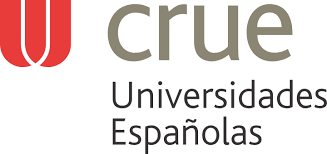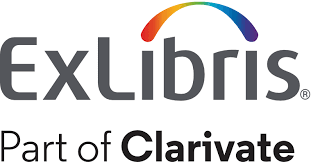Banda ancha móvil privada y su interacción con redes de voz de la Policía Nacional
DOI:
https://doi.org/10.22335/rlct.v14i1.1436Palabras clave:
Atribución de frecuencias, comunicación móvil, red de telecomunicaciones, teléfono móvil, transmisión de datosResumen
Las comunicaciones de misión crítica utilizadas a nivel mundial para la seguridad pública han estado basadas en soluciones de banda angosta, enmarcadas en los diferentes protocolos incluidos en Land Mobile Radio (LMR), como APCO 25, utilizado por la Policía Nacional. Si bien estas tecnologías han sido de gran importancia y cuentan con una madurez de implementación bastante consolidada para la transmisión confiable de voz, tienen limitantes para la transmisión de datos como imágenes y videos, por lo que se hace necesario el aprovechamiento de una tecnología como Long Term Evolution (LTE). Teniendo en cuenta esta necesidad, se llevó a cabo una revisión de la literatura científica-técnica, realizando un análisis del estado del arte de artículos seleccionados de varias bases de datos; asimismo, se determinaron criterios de inclusión y exclusión para el estudio, gracias a lo cual se logró identificar que hoy en día no se tiene la capacidad tecnológica para realizar un desarrollo de una red LTE para seguridad pública; con base en lo anterior, se identificó la necesidad de una implementación tecnológica que garantice la coexistencia de las dos redes LMR y LTE, aprovechando las bondades de cada una de ellas en una suma que incrementa las capacidades tecnológicas en el servicio de policía.
Descargas
Referencias
GPP. (2013). Public Safety. 3GPP a Global Initiative. https://www.3gpp.org/news-events/3gpp-news/1455-Public-Safety;
GPP. (2020). 3GPP a global iniative. About 3GPP. https://www.3gpp.org/about-3gpp
Abdulrahman, Y. (2020). Public Safety Communications Evolution. In IEEE Wiley Telecommunications eBooks (pp. 227–244). Wiley. https://doi.org/10.1002/9781119580157.ch14
ANE. (2020, April 1). Resolucion 105 de 2020. Agencia Nacional Del Espectro. https://normograma.mintic.gov.co/mintic/docs/resolucion_ane_0105_2020.htm
Astély, D., Dahlman, E., Furuskär, A., Jading, Y., Lindström, M., & Parkvall, S. (2009). LTE: The evolution of mobile broadband. IEEE Communications Magazine, 47(4), 44–51. https://doi.org/10.1109/MCOM.2009.4907406
Barbara, K. (2004). Procedures for Performing Systematic Reviews. Keele University Technical Report, 33.
Camps-Mur, D., Garcia-Saavedra, A., & Serrano, P. (2013). Device-to-device communications with WiFi direct: Overview and experimentation. IEEE Wireless Communications, 20(3), 96–104. https://doi.org/10.1109/MWC.2013.6549288
Chi, K., Du, X., Yin, G., Wu, J., Guizani, M., Han, Q., & Yang, Y. (2020). Efficient and fair Wi-Fi and LTE-U coexistence via communications over content centric networking. Future Generation Computer Systems, 112, 297–306. https://doi.org/10.1016/j.future.2020.05.026
Choi, S. W., Song, Y. S., Shin, W. Y., & Kim, J. (2019). A feasibility study on mission-critical push-to-talk: Standards and implementation perspectives. IEEE Communications Magazine, 57(2), 81–87. https://doi.org/10.1109/MCOM.2018.1700886
Comisión de Regulación de Comunicaciones. (2016). Resolucion 4972 de 2016. Sistema Único de Información Normativa. http://www.suin-juriscol.gov.co/viewDocument.asp?ruta=Resolucion/30038120
Congreso de la Republica. (2009). Ley 1341 de 2009. https://www.alcaldiabogota.gov.co/sisjur/normas/Norma1.jsp?i=36913
Constitución Política de Colombia. (2020, September 13). Leyes desde 1992 - Vigencia expresa y control de constitucionalidad [CONSTITUCION_POLITICA_1991]. Secretaria Senado. http://www.secretariasenado.gov.co/senado/basedoc/constitucion_politica_1991.html#1
Departamento Nacional de Planeacion. (2006). Implementacion Del Sistema Integrado De Emergencias Y Seguridad-Sies De Colombia - Documento Conpes 3437. 0–43.
Doumi, T., Dolan, M. F., Tatesh, S., Casati, A., Tsirtsis, G., Anchan, K., & Flore, D. (2013). LTE for public safety networks. IEEE Communications Magazine, 51(2), 106–112. https://doi.org/10.1109/MCOM.2013.6461193
Engels, A., Reyer, M., Xu, X., Mathar, R., Zhang, J., & Zhuang, H. (2013). Autonomous self-optimization of coverage and capacity in LTE cellular networks. In IEEE Transactions on Vehicular Technology (Vol. 62, Issue 5, pp. 1989–2004). Institute of Electrical and Electronics Engineers Inc. https://doi.org/10.1109/TVT.2013.2256441
ETSI. (2021). ETSI - THIRD GENERATION PARTNERSHIP PROJECT. THIRD GENERATION PARTNERSHIP PROJECT (3GPP). https://www.etsi.org/committee/3gpp
FCC. (2016, February 3). Narrowbanding Overview. Federal Communications Commission. https://www.fcc.gov/narrowbanding-overview
Feng, D., Lu, L., Yi, Y. W., Li, G. Y., Feng, G., & Li, S. (2013). Device-to-device communications underlaying cellular networks. IEEE Transactions on Communications, 61(8), 3541–3551. https://doi.org/10.1109/TCOMM.2013.071013.120787
Ferrús, R., & Sallent, O. (2014). Extending the LTE/LTE-a business case: Mission- and business-critical mobile broadband communications. IEEE Vehicular Technology Magazine, 9(3), 47–55. https://doi.org/10.1109/MVT.2014.2333695
Ferrús, R., & Sallent, O. (2015a). Public Protection and Disaster Relief Communications. Mobile Broadband Communications for Public Safety, 1–48. https://doi.org/10.1002/9781118831243.CH1
Ferrús, R., & Sallent, O. (2015b). Radio Spectrum for PPDR Communications. Mobile Broadband Communications for Public Safety, 257–315. https://doi.org/10.1002/9781118831243.CH6
Ferrús, R., Sallent, O., Baldini, G., & Goratti, L. (2013). LTE: The technology driver for future public safety communications. IEEE Communications Magazine, 51(10), 154–161. https://doi.org/10.1109/MCOM.2013.6619579
FirstNet. (2020). FirstNet Push-to-Talk: LMR Interoperability Option.
FirstNet - Nationwide Network for Public Safety by Public Safety. (2021). FIRSTNET. https://www.firstnet.com/power-of-firstnet.html
Griffith, D., Rouil, R., Izquierdo, A., & Golmie, N. (2015). Measuring the resiliency of cellular base station deployments. 2015 IEEE Wireless Communications and Networking Conference, WCNC 2015, 1625–1630. https://doi.org/10.1109/WCNC.2015.7127711
Hallahan, R., & Peha, J. M. (2010). Quantifying the costs of a nationwide public safety wireless network. Telecommunications Policy, 34(4), 200–220. https://doi.org/10.1016/j.telpol.2010.01.002
Hallahan, R., & Peha, J. M. (2011). The business case of a network that serves both public safety and commercial subscribers. Telecommunications Policy, 35(3), 250–268. https://doi.org/10.1016/j.telpol.2010.12.006
Homeland security. (2012). Nationwide Public Safety Broadband Network. June.
Infobae. (2021). Cuáles son las marcas de celulares más vendidas. https://www.infobae.com/america/tecno/2021/02/23/cuales-son-las-marcas-de-celulares-mas-vendidas/
ITU. (2015). Resolution 646 (Rev.WRC-15). https://www.itu.int/oth/R0A0600001A/es
Jackson, D. (2020, November 20). Public safety transitioning to LTE-based solutions, but PTT timetable still unclear, speakers say – Urgent Comms. https://urgentcomm.com/2020/11/20/public-safety-transitioning-to-lte-based-solutions-but-voice-timetable-still-unclear-speakers-say/
Jarwan, A., Sabbah, A., Ibnkahla, M., & Issa, O. (2019). LTE-Based Public Safety Networks: A Survey. IEEE Communications Surveys and Tutorials, 21(2), 1165–1187. https://doi.org/10.1109/COMST.2019.2895658
Kumbhar, A., & Guvenc, I. (2015). A comparative study of Land Mobile Radio and LTE-based public safety communications. Conference Proceedings - IEEE SOUTHEASTCON, 2015-June(June). https://doi.org/10.1109/SECON.2015.7132951
Kuwadekar, A., & Al-Begain, K. (2014). A real world evaluation of Push to Talk service over IMS and LTE for public safety systems. International Conference on Wireless and Mobile Computing, Networking and Communications, 365–370. https://doi.org/10.1109/WiMOB.2014.6962196
Lee, S. (2011). Consolidation of public safety wireless networks: An options-based economic analysis of numerous scenarios. Telecommunications Policy, 35(2), 91–101. https://doi.org/10.1016/j.telpol.2010.12.015
Luu, C., Syed, D., Gaither, M., & Contestabile, J. (2018). Evaluation of Datacasting and LTE Integration for Public Safety and First Responder Applications. 2018 IEEE International Symposium on Technologies for Homeland Security, HST 2018, 1–7. https://doi.org/10.1109/THS.2018.8574138
Magnnusen, W. (2018). The Importance of LTE Interoperability. MissionCritical Communications, 24–28. MCCmag.com
Marojevic, V., Rao, R. M., Ha, S., & Reed, J. H. (2018). Performance analysis of a mission-critical portable LTE system in targeted RF interference. IEEE Vehicular Technology Conference, 2017-September, 1–6. https://doi.org/10.1109/VTCFall.2017.8288187
Martínez, A. S. (2016). Comunicaciones Críticas de Emergencia Interoperables, Seguras y Globales. Linkedin. https://es.linkedin.com/pulse/comunicaciones-críticas-de-emergencia-interoperables-aitor
Martinez, D., & P. Monnes. (2018, April). LMR/LTE Interworking Standarsds. Mission Critical Communications, 14–20. https://www.rrmediagroup.com/Features/FeaturesDetails/FID/831/eLearning/eLearning/Digital-Events/
Masood, A., Scazzoli, D., Sharma, N., Moullec, Y. Le, Ahmad, R., Reggiani, L., Magarini, M., & Alam, M. M. (2020). Surveying pervasive public safety communication technologies in the context of terrorist attacks. Physical Communication, 41, 1–23. https://doi.org/10.1016/j.phycom.2020.101109
MinTic. (2015). Decreto 2434 del 17 de diciembre de 2015. https://www.mintic.gov.co/portal/inicio/14455:Decreto-2434-del-17-de-diciembre-de-2015
MinTic. (2020). Uso del espectro radioeléctrico para servicios de seguridad. http://www.mintic.gov.co/portal/604/w3-article-146317.html
Moher, D., Liberati, A., Tetzlaff, J., Altman, D. G., Antes, G., Atkins, D., Barbour, V., Barrowman, N., Berlin, J. A., Clark, J., Clarke, M., Cook, D., D’Amico, R., Deeks, J. J., Devereaux, P. J., Dickersin, K., Egger, M., Ernst, E., Gøtzsche, P. C., … Tugwell, P. (2019). Preferred Reporting Items for Systematic Reviews and Meta-Analyses: The PRISMA Statement. PLOS MEDICINE, 6(7), 1–6.
Olbrich, E. (2019). Why MCPTT Interoperability Is Important. MissionCritical Communications, 60–65. https://www.rrmediagroup.com/eLearning/frmSignin/MCID/202
Ovando, C., Pérez, J., & Moral, A. (2015). LTE techno-economic assessment: The case of rural areas in Spain. Telecommunications Policy, 39(3–4), 269–283. https://doi.org/10.1016/j.telpol.2014.11.004
Pinson, M. (2017). Gaps in public - Safety Cameras. MissionCritical Communications, 30–35. MCCmag.com
Prasad, A., Maeder, A., Samdanis, K., Kunz, A., & Velev, G. (2016). Enabling group communication for public safety in LTE-Advanced networks. Journal of Network and Computer Applications, 62, 41–52. https://doi.org/10.1016/j.jnca.2015.10.014
Raza, A. (2016). LTE network strategy for Smart City Public Safety. 2016 IEEE International Conference on Emerging Technologies and Innovative Business Practices for the Transformation of Societies, EmergiTech 2016, 34–37. https://doi.org/10.1109/EmergiTech.2016.7737306
Rouil, R., Garey, W., Gentile, C., Golmie, N., & Schwinghammer, P. (2018). Increasing public safety broadband network resiliency through traffic control. Digital Communications and Networks, 4(1), 48–57. https://doi.org/10.1016/j.dcan.2017.09.005
Saafi, S., Hosek, J., & Kolackova, A. (2020). Cellular-enabled Wearables in Public Safety Networks: State of the Art and Performance Evaluation. International Congress on Ultra Modern Telecommunications and Control Systems and Workshops, 2020-October, 201–207. https://doi.org/10.1109/ICUMT51630.2020.9222459
Solís Tulande, E. (2017). Análisis de viabilidad técnica y funcional de una red de protección pública y gestión de desastres bajo la tecnología (eLTE) para la policía nacional en la ciudad de Villavicencio. Universidad Santo Tomas.
The World Radiocommunicacion Conference. (2012). Studies to support broadband public protection and disaster relief. 1–2. https://www.itu.int/dms_pub/itu-r/oth/0c/0a/R0C0A00000A0017PDFE.pdf
Urrutia, G., & Bonfill, X. (2010). Declaracion PRISMA: una propuesta para mejorar la publicación de revisiones sistemáticas y mataanálisis. In Medicina Clínica (Vol. 135, Issue 11, pp. 507–511). http://es.cochrane.org/sites/es.cochrane.org/files/public/uploads/PRISMA_Spanish.pdf
Voss Britta. (2019). The Critical Need for Data Interoperability. MissionCritical Communications, 52–59. https://www.rrmediagroup.com/eLearning/eLearning-Registration/MCID/202/userID/9827
Yu, W., Xu, H., Nguyen, J., Blasch, E., Hematian, A., & Gao, W. (2018). Survey of Public Safety Communications: User-Side and Network-Side Solutions and Future Directions. In IEEE Access (Vol. 6, pp. 70397–70425). Institute of Electrical and Electronics Engineers Inc. https://doi.org/10.1109/ACCESS.2018.2879760
Zhang, B., Li, Y., Jin, D., & Han, Z. (2016). Network Science Approach for Device Discovery in Mobile Device-to-Device Communications. IEEE Transactions on Vehicular Technology, 65(7), 5665–5679. https://doi.org/10.1109/TVT.2015.2453234
Publicado
Número
Sección
Licencia
Derechos de autor 2021 Revista Logos Ciencia & Tecnología

Esta obra está bajo una licencia internacional Creative Commons Atribución 4.0.
Esta revista provee acceso libre e inmediato a su contenido (https://creativecommons.org/licenses/by-nc-nd/4.0/), bajo el principio de hacer disponible gratuitamente la investigación al público y apoyar a un mayor intercambio de conocimiento global.
































